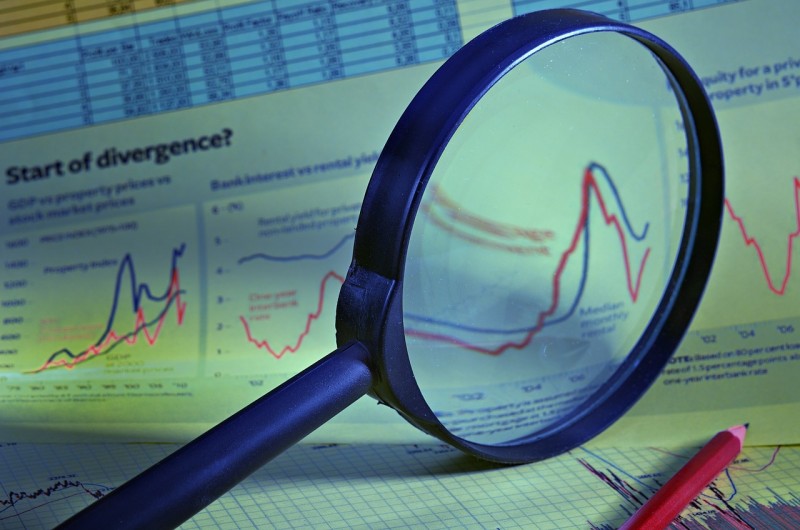Exploring Morocco’s Economic Trends in 2024: Rebounding Domestic Demand, Agricultural Challenges, and Robust Remittance Inflows
Morocco’s domestic demand saw a significant surge in the first quarter of 2024, growing at an annualized rate of 3.6%, up from just 0.3% in the same period last year. This rise is detailed in the latest report from Morocco’s Higher Commission of Planning (HCP), which highlights the importance of domestic demand as a key economic indicator, encompassing household, investor, and government expenditures.
This growth has been primarily driven by increased household expenditures and gross investment. Household final consumption expenditure grew by 3%, compared to a 0.9% increase the previous year, while gross investment, including Gross Fixed Capital Formation (GFCF), changes in inventories, and net acquisition of valuables, rose by 4.6%, reversing a 5% decline in 2023.
In contrast, public administration’s final consumption slowed, decreasing from 4.5% in the first quarter of 2023 to 3.9% in the first quarter of 2024. The overall economy is rebounding strongly after three challenging years marked by severe drought and external shocks. The HCP report reveals that strong domestic demand has been a key driver of economic growth in the first quarter of 2024, with GDP averaging 2.5%, down from 3.9% in the same period last year. This growth was achieved in a context of controlled inflation and an improvement in the national economy’s financing capacity.
Economic Growth Slows to 2.5% in 2024 Amid Agricultural Decline
In the first quarter of 2024, Morocco’s economy experienced a notable slowdown, with GDP growth slowing to 2.5% compared to 3.9% the previous year, according to a recent report from the Higher Commission of Planning (HCP). This deceleration was driven by varied sectoral performances, particularly in agriculture and manufacturing.

The agricultural sector, the primary sector, contracted significantly, with added value shrinking by 4.3% and agricultural output declining by 5%, reversing a 2.1% increase seen a year earlier. In contrast, the fishing industry rebounded strongly, registering a 10% increase after a 4.8% decline in the same period last year.
Meanwhile, the secondary sector, which includes industries involved in manufacturing and construction, showed resilience with a 3.6% increase in added value, up from a 0.4% decrease in the previous year’s first quarter. Manufacturing growth, however, slowed to 2.1% from 3%, while the extraction industry surged by 17.7%, a significant turnaround from a 12.1% decline previously. Utilities and construction also saw positive growth, reversing previous declines.
The tertiary sector, encompassing services, recorded a slowdown with growth easing to 3% from 6% a year ago. This was influenced by slower growth in financial services (3.9% compared to 7.3%) and transport and storage (3.4% from 8.7%), among other service sectors like education and health.
Despite these challenges, Morocco’s economic slowdown was partly offset by robust domestic demand, which grew by 3.6% compared to 0.3% in the same period last year, contributing significantly to overall economic growth. Household consumption expanded by 3%, up from 0.9%, while public consumption growth moderated slightly.
For more recent updates, it’s recommended to check the latest reports from the Higher Commission of Planning or other relevant economic authorities.
Morocco Remains the Second Largest Receiver of Remittances in the MENA Region
According to the latest Migration and Development Brief released by the World Bank, Morocco has experienced significant growth in migrant remittances, marking a new record-high level in 2023. This increase underscores the profound impact of the September 2023 earthquake on financial transfers to the country.
In 2023, remittances to Morocco rose by 5.2% to reach $11.8 billion, solidifying its position as the second largest recipient of remittances in the Middle East and North Africa (MENA) region, trailing only Egypt. These remittance inflows play a critical role in Morocco’s economy, constituting 8.2% of its GDP and consistently surpassing foreign direct investment (FDI) flows.

The resilience of remittance flows from Moroccans abroad throughout 2023 was particularly noteworthy, reflecting the counter-cyclical nature of remittances that tend to increase in response to economic shocks or natural disasters in migrants’ home countries, such as the aforementioned earthquake.
Looking forward, the World Bank report forecasts challenges for remittances in the MENA region due to economic pressures faced by oil-importing countries like Morocco. Despite these challenges, remittance flows are expected to rebound by 4.3% in 2024. Additionally, the cost of sending $200 to the region decreased to an average of 5.9% in 2023 from 6.7% the previous year, indicating progress in reducing transaction costs.
Morocco has made significant strides in enhancing the infrastructure for remittances, promoting financial inclusion, and facilitating digital transfer mechanisms. These efforts align with the country’s New Development Model, which aims to harness remittances as a driver of economic and social development.
However, several challenges persist. These include the ongoing effort to further reduce remittance costs to achieve the UN Sustainable Development Goal target of 3%, as well as increasing awareness and adoption of digital remittance platforms, particularly in rural areas where access to financial services remains limited.
The World Bank’s findings underscore the critical role of remittances in Morocco’s economy and highlight the potential for these financial inflows to contribute significantly to inclusive growth and poverty reduction efforts. For the latest updates on remittance trends and economic developments in Morocco and the MENA region, stakeholders are encouraged to consult the World Bank’s most recent reports and analyses.
Read More MOROCCO DEVELOPING INVESTMENT MECHANISM FOR JOB-CREATING SMES AMID ECONOMIC GROWTH CONCERNS
